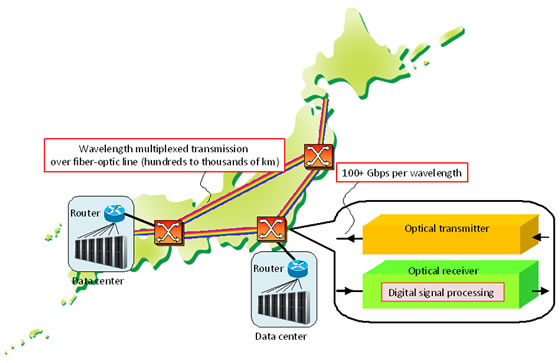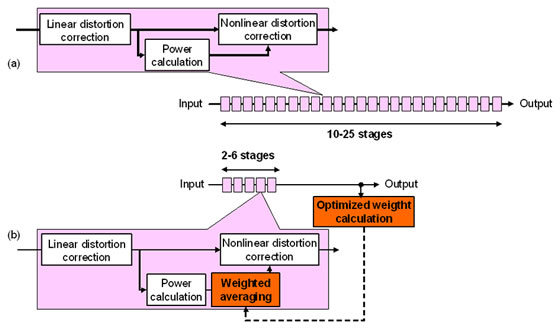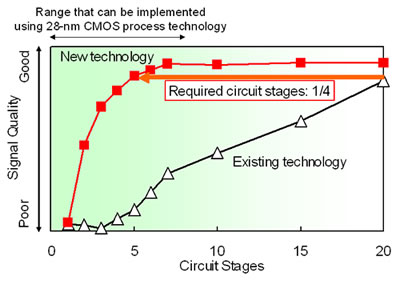Archived content
NOTE: this is an archived page and the content is likely to be out of date.
Fujitsu Shrinks by 70% Distortion-Compensation Circuit for Fiber-Optic Transmissions over 100 Gbps
Expected to enable ultrafast data communications within 5 years
Fujitsu Limited,Fujitsu Laboratories Ltd.,Fujitsu Research and Development Center Co., Ltd.
-
[1] National Institute of Information and Communications Technology (NICT)
NICT was established in April 2004 as an incorporated administrative agency to carry out research and development in the field of information and communications technology. The agency is based in Tokyo and led by Dr. Hideo Miyahara, president.
-
[2] Nonlinear optical effects
Interactions between light and matter which occur when extremely powerful light passes through fiber optic lines or other materials. The challenge in this instance is a form of what is called self-phase modulation, in which the phase of the light wave changes over an interval in response to its intensity.
-
[3] Nonlinear compensation technology
A technology making it possible to counteract the complex waveform distortion that accumulates from the nonlinear effects occurring at every point on a long-distance fiber-optic line.
-
[4] Circuit stages
In nonlinear compensation technology, because the linear distortion and nonlinear distortion tend to gradually compensate for each other over long-distance transmission lines, the same circuit must be designed so that it has multiple stages of serial connections.
About Fujitsu
Fujitsu is a leading provider of ICT-based business solutions for the global marketplace. With approximately 170,000 employees supporting customers in 70 countries, Fujitsu combines a worldwide corps of systems and services experts with highly reliable computing and communications products and advanced microelectronics to deliver added value to customers. Headquartered in Tokyo, Fujitsu Limited (TSE:6702) reported consolidated revenues of 4.6 trillion yen (US$50 billion) for the fiscal year ended March 31, 2010. For more information, please see: www.fujitsu.com.
About Fujitsu Laboratories
Founded in 1968 as a wholly owned subsidiary of Fujitsu Limited, Fujitsu Laboratories Limited is one of the premier research centers in the world. With a global network of laboratories in Japan, China, the United States and Europe, the organization conducts a wide range of basic and applied research in the areas of Next-generation Services, Computer Servers, Networks, Electronic Devices and Advanced Materials. For more information, please see: http://jp.fujitsu.com/labs/en.
About Fujitsu Research and Development Center
Established in 1998, Fujitsu Research and Development Center Co., Ltd. is a wholly owned R&D center of Fujitsu Limited, located in Beijing. The center's research areas cover the major business fields of the Fujitsu Group, including information processing, telecommunications, semiconductors, and software and services.For more information, please visit: http://cn.fujitsu.com/frdc/.
Technical Contacts
![]() E-mail: nlc@ml.labs.fujitsu.com
E-mail: nlc@ml.labs.fujitsu.com
Company:Fujitsu Laboratories Ltd.
Company, organization, and product names mentioned herein are trademarks or registered trademarks of their respective owners. Information provided in this press release is accurate at time of publication and is subject to change without advance notice.
Date: 21 September, 2010
City: Tokyo and Kawasaki, Japan, and Beijing, China
Company:
Fujitsu Limited,
Fujitsu Laboratories Ltd.,
Fujitsu Research and Development Center Co., Ltd.,
,
,


